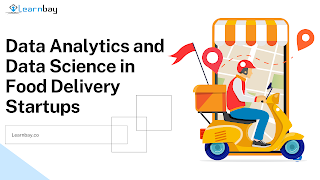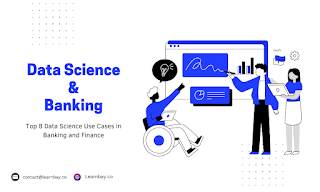Top Data Science Applications in Waste Management
Introduction
The basic definition of data science is the process of drawing out useful information from unstructured data. Our tutorial will explain the ins and outs of this constantly evolving area, as well as provide instances of how it is being applied. This is how it's used to manage waste.
Robots for Recycling With AI
Recycling has always required a lot of labor and has an unexpectedly high rate of worker injuries. Solid waste recycling is now cheaper, safer, and more effective thanks to the clever machines that have primarily replaced the human component.
One such device is Clarke, the result of an alliance between the Carton Council and two Denver-based businesses. A recycling robot named Clarke utilizes artificial intelligence to recognize a variety of food and drink containers so that it can actively separate them from the rest of the recycling garbage. A commercial robot that has been used for 20 years in other sectors is used in the Clarke project.
This is one illustration of how big data enables the garbage sector to reinvent itself by making use of tried-and-true, already-existing technology. With a current throughput of 60 cartons of recyclables per minute and nearly flawless accuracy, Clarke has been developing its recycling data capabilities.
The waste management system may sort at superhuman rates as the AI quotient rises based on collected solid waste data, diverting stuff for reprocessing that would otherwise end up in a landfill. AI has been implemented in many fields to reduce difficulties in organizations. Learn AI from the best artificial intelligence course in Bangalore.
Vehicle recycling
Despite the fact that the typical automobile has a lifespan of about ten years and 200,000 miles, many cars last far longer. The contradiction is somewhat exacerbated by the fact that Americans purchase 17.6 million new automobiles annually. Where are all of the old automobiles going if we are purchasing so many new ones? The reply is another illustration of how big data is transforming the trash sector. Natural catastrophes like storms and floods render many automobiles unusable. Large numbers of cars are affected by the harsh conditions, which results in an excess of inventory for scrapyards and waste haulers.
Many of these cars are simply destroyed, but some of them are broken down for parts once the recalled parts are removed. Scrap and salvage shops and auction sites can improve the processes they employ to handle afflicted automobiles by leveraging big data to uncover trends in disaster-related car abandonment and by comparing that information with recall databases. This helps salvage companies increase owner reimbursements, enhance part distribution, and maintain the flow of totaled vehicles, allowing more vehicles to be put to use instead of ending up in the scrap yard.
Analytical GIS
Recently, the Swedish city of Stockholm looked into the possibility of utilizing big data to address its issues with municipal garbage. The main goal of their investigation was to use GIS to find garbage collection route inefficiencies in the city and make suggestions for potential changes based on their analyses. With over 500,000 data points, including trash proportions, weights, and collection locations, the city built a sizable dataset. They created a number of fresh waste management maps and then bulk geocoded the selected elements.
Following a preliminary investigation, detailed maps of a few chosen routes were created, and a unique efficiency index was used to evaluate their efficacy. The experiment exposed significant inefficiencies, which prompted a number of measures, including but not limited to the development of a shared fleet of vehicles for garbage collection.
Using Satellite Information to Protect Our Oceans
The Australian government is making every effort to rescue the Great Barrier Reef, which is in danger of dying. Warming seas that are hastening coral bleaching and resulting in long-term harm to this natural resource are among the factors highlighted by experts as contributing to the deterioration of the reef.
Identifying ecological hazards in the waters using satellite sensors and data processors is one way that big data might help prevent additional environmental harm. The environmental effects of shipping routes can be ascertained by scientists by looking for patterns in the paths traveled by ships. This information might serve as a foundation for investigations and enforcement actions by regulatory bodies.
Sensa's Fullness Monitoring
These methods show how big data may be used in the waste management sector; however, they mostly concentrate on analyzing massive data patterns to make medium- to long-term strategic adjustments. However, some businesses are taking things a step further by figuring out how to use big data now to enhance waste management operations at both the micro and macro levels.
Sensa Networks, which works with waste management solutions at all levels, is one example of a disruptive force in a sector. Sensa's Fullness Monitoring completely transforms how garbage haulers work by automatically setting up pick-ups and sending purchase orders only when compactors reach a certain fullness level.
The sensor-based strategy minimizes the expense of pointless gathering efforts while also lowering the carbon footprint of a company. A unique and thorough web-based remote monitoring tool is used to oversee everything. The fact that all Fullness Monitoring data is real-time updated and accessible around the clock adds another layer of security.
Conclusion
Big data is more than just a passing fad; it's a paradigm-shifting technology that's here to stay. Companies that understand the organizational advantages of using big data and data science to improve their operations will unquestionably become market leaders, while those that refuse to adapt to new technologies will see a corresponding decline in profitability. The time is right to take advantage of these cutting-edge processes and products. Learn data science from the best data science course in Bangalore. It is an IBM-certified course with more than 15 live projects.




Comments
Post a Comment